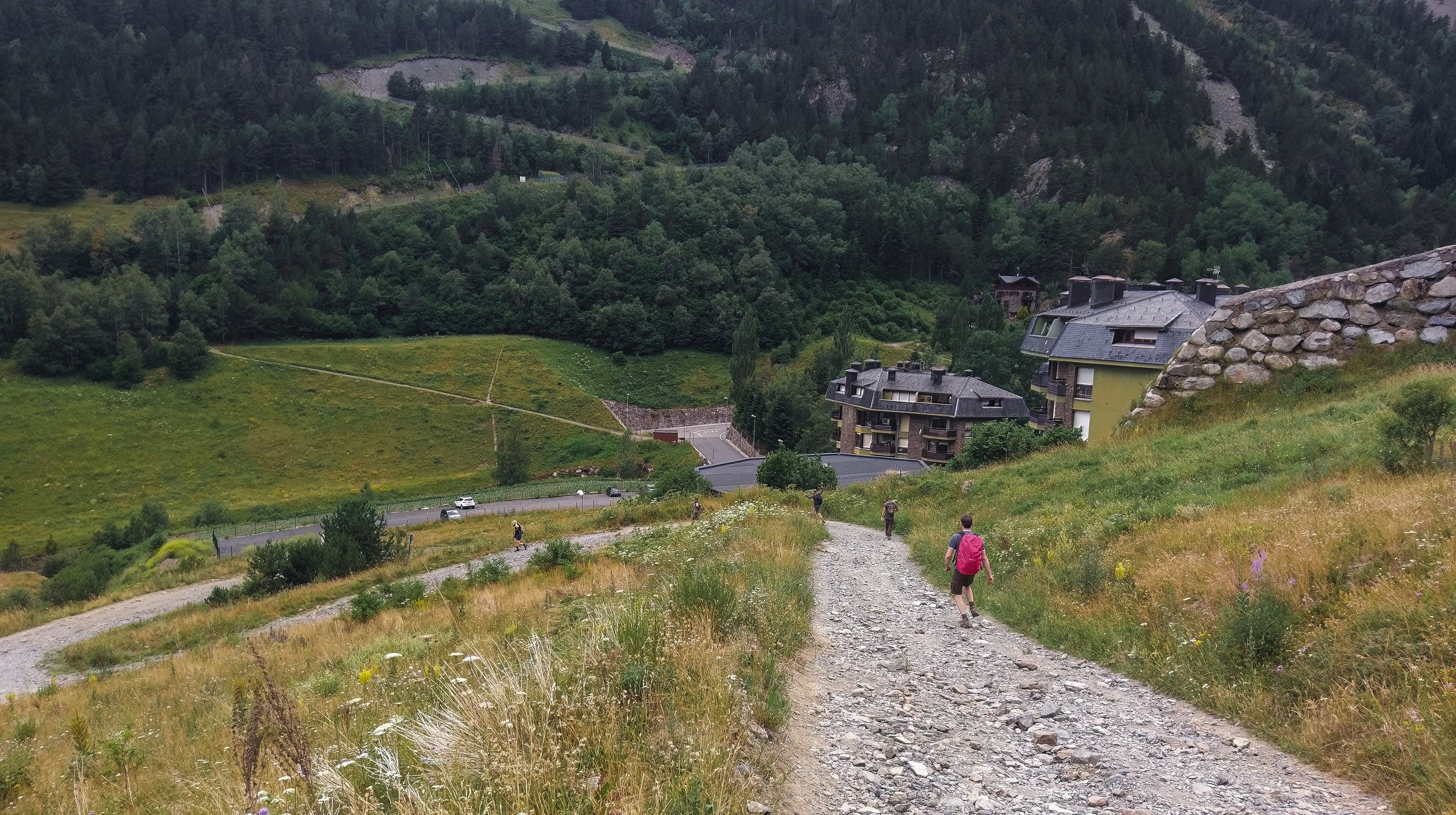Andorra
For this trip, we had our sights set on the tallest peak of Andorra, the Coma Pedrosa in July. This would be the first of many international climbs for us.
Climbing Coma Pedrosa
We flew out from London to Toulouse, France. From there we took a coach to Andorra La Vella. Then, a taxi to our lodge in Arinsal, where we would stay for the next 3 nights.
The rugged mountains of Andorra feature 65 peaks that exceed 2,000 meters (6,562 feet) in elevation. Among these, Coma Pedrosa stands as the tallest, reaching up to 2,943 meters (9,656 feet).
The ascent to the summit offers a stunning transition from forested landscapes to glacial cirques. It was going to be harder than anything half of us had done before. At 12km in length and an ascent of 1365m.
On the day of the climb, the temps were to be in the mid to high 20s Celsius. We took the earliest local bus to the Communal Natural Park of the Comapedrosa Valleys. This is where the Coma Pedrosa Trail begins.
The first 3.5km in the Natural Park was beautiful red pines and fir forest.
As we hiked up the valley, the trail started to get steeper. Becoming increasingly rocky and challenging. The hiking poles were in full use by that point.
Once the valley was ‘mostly’ conquered, the vista opened up to the last grassy plain we’d see on the way up. The Pleta del Comapedrosa. If we looked in front of us, we could see the mountain’s glacial valleys.
The Refugi del Comapedrosa at 2,260m is located here. We took a longer break than I would recommend here.
We started to climb again. Above the valley at 2,600m we could see the lakes were still covered by layers of snow and ice. I made a quick detour to fill my filtration bottle with ice-cold water. Then we started the last push to the top.
We chose to go right, up the Alt de Comapedrosa. This was a hard combination of ridge walking and steep scrambling on loose stones. At points, we had to tackle the steepness on all fours.
We got to the top and the view didn’t disappoint. We could see for miles in all directions looking out at Andorra, France, and Spain. Including Pica d’Estats, the highest mountain in Catalonia.
We came down the opposite way on the Estany Negre. The steepness of the return was very hard on the knees for some of us. Sticks and even knee braces helped on the way down. The route we took back down was mostly irregular steps.
We made it down before the last restaurant in Arinsal closed. An Argentine restaurant ‘Pampa’. Including our stop at the refuge and time on top, it took us 11-12 hours roundtrip to complete.
Experiencing Andorra
The next day we had a shorter hike from town. We went to an overlook where we could see the town from the opposite side of the valley.
Still recovering from the previous day we managed 10km, with a 673m ascent.
The rest of the day was spent taking it easy. We enjoyed a local restaurant, L’Hort De Casa. They served tasty snails, pig feet, and local sausages. We headed to bed very exhausted and full. And, traveled home the next day.
Final Thoughts
Our venture to Andorra and our ascent of Coma Pedrosa was a test of physical endurance. A rewarding immersion into the natural beauty of the region.
From the forests to the glacial vistas, it's a climb we won't soon forget. Despite the challenges, the panoramic views from the peak and the camaraderie made it worth every step.
But, the next time we tackle an international climb, we'll give ourselves more than three days. We want to enjoy the culture too.
This is an adventure that should be high on your list!
Subscribe to the blog. And, follow us on Instagram to keep up with our adventures.




































